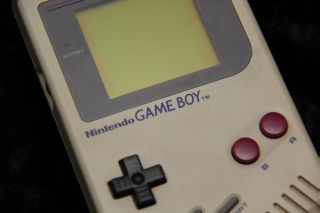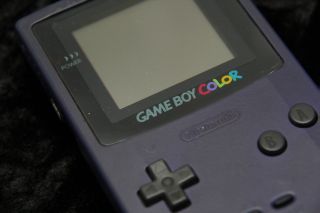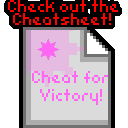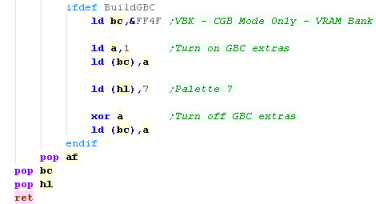| Section |
Addr |
Name |
Bits |
Bit Meaning |
| Joy |
FF00 |
P1/JOYP -
Joypad (R/W) |
--BD3210 |
B=Buttons
D=Direction 3210=buttons DULR SSBA |
| Serial |
FF01 |
SB -
Serial transfer data (R/W) |
|
8 Bits of
data |
| Serial |
FF02 |
SC -
Serial Transfer Control (R/W) |
S-----SC |
SC - Serial
Transfer Control (R/W) |
| Timer |
FF04 |
DIV -
Divider Register (R/W) |
|
|
| Timer |
FF05 |
TIMA -
Timer counter (R/W) |
|
|
| Timer |
FF06 |
TMA -
Timer Modulo (R/W) |
|
|
| Timer |
FF07 |
TAC -
Timer Control (R/W) |
-----SCC |
S=Stary
CC=Clockspeed |
| INT |
FF0F |
IF -
Interrupt Flag (R/W) |
|
|
| Sound |
FF10 |
NR10 -
Channel 1 (Tone & Sweep) Sweep register (R/W) |
-TTTDNNN |
T=Time,D=direction,N=Numberof
shifts
|
| Sound |
FF11 |
NR11 -
Channel 1 (Tone & Sweep) Sound length/Wave pattern duty
(R/W) |
DDLLLLLL |
L=Length
D=Wave pattern Duty |
| Sound |
FF12 |
NR12 -
Channel 1 (Tone & Sweep) Volume Envelope (R/W) |
VVVVDNNN |
C1 Volume /
Direction 0=down / envelope Number (fade speed) |
| Sound |
FF13 |
NR13 -
Channel 1 (Tone & Sweep) Frequency lo (Write Only) |
LLLLLLLL |
pitch L |
| Sound |
FF14 |
NR14 -
Channel 1 (Tone & Sweep) Frequency hi (R/W) |
IC---HHH |
C1 Initial /
Counter 1=stop / pitch H |
| Sound |
FF16 |
NR21 �
Channel 2 (Tone) Sound Length/Wave Pattern Duty (R/W) |
DDLLLLLL |
L=Length
D=Wave pattern Duty |
| Sound |
FF17 |
NR22 -
Channel 2 (Tone) Volume Envelope (R/W) |
VVVVDNNN |
C1 Volume /
Direction 0=down / envelope Number (fade speed) |
| Sound |
FF18 |
NR23 -
Channel 2 (Tone) Frequency lo data (W) |
LLLLLLLL |
pitch L |
| Sound |
FF19 |
NR24 -
Channel 2 (Tone) Frequency hi data (R/W) |
IC---HHH |
C1 Initial /
Counter 1=stop / pitch H |
| Sound |
FF1A |
NR30 -
Channel 3 (Wave Output) Sound on/off (R/W) |
E------- |
1=on |
| Sound |
FF1B |
NR31 -
Channel 3 (Wave Output) Sound Length |
NNNNNNNN |
Higher is
shorter - no effect unles C=1 in FF1E |
| Sound |
FF1C |
NR32 -
Channel 3 (Wave Output) Select output level (R/W) |
-VV----- |
VV=Volume
(0=off 1=max 2=50% 3=25%) |
| Sound |
FF1D |
NR33 -
Channel 3 (Wave Output) Frequency's lower data (W) |
LLLLLLLL |
Low frequency |
| Sound |
FF1E |
NR34 -
Channel 3 (Wave Output) Frequency's higher data (R/W) |
RC---HHH |
H=high
frequency C=counter repeat (loop) R=Restart sample |
| Sound |
FF20 |
NR41 -
Channel 4 (Noise) Sound Length (R/W) |
---LLLLL |
L=Length |
| Sound |
FF21 |
NR42 -
Channel 4 (Noise) Volume Envelope (R/W) |
VVVVDNNN |
Volume /
Direction 0=down / envelope Number (fade speed) |
| Sound |
FF22 |
NR43 -
Channel 4 (Noise) Polynomial Counter (R/W) |
SSSSCDDD |
Shift clock
frequency (pitch) / Counter Step 0=15bit 1=7bit (sounds
electronic)/ Dividing ratio (roughness) |
| Sound |
FF23 |
NR44 -
Channel 4 (Noise) Counter/consecutive; Inital (R/W) |
IC------ |
C1 Initial /
Counter 1=stop |
| Sound |
FF24 |
NR50 -
Channel control / ON-OFF / Volume (R/W) |
-LLL-RRR |
Channel
volume (7=loud) |
| Sound |
FF25 |
NR51 -
Selection of Sound output terminal (R/W) |
LLLLRRRR |
Channel 1-4 L
/ Chanel 1-4R (1=on) |
| Sound |
FF26 |
NR52 -
Sound on/off |
A---4321 |
read Channel
1-4 status or write All channels on/off (1=on) |
| Sound |
FF30
� FF3F |
Wave
Pattern RAM |
HHHHLLLL |
32
4 bit samples |
| LCD |
FF40 |
LCDC - LCD
Control (R/W) |
EWwBbOoD
|
E=enable
screen
W=Window addr (&9C00/9800)
w=window display on
B=Background
pattern addr (&8000/8800)
b=background tilemap addr (&9800/9C00)
O=Object sprite size 1=8x16...
o=Object Sprites enable ...
D=Background display
|
| LCD |
FF41 |
STAT
-
LCDC Status (R/W) |
|
Ly
coincidence interrupt on, Oam Interrupt on, Vblank interrupt on,
Hblank interrupt on, Coincidence flag, MM=video mode (0/1 =Vram
available)
|
| Tile |
FF42 |
SCY � Tile
Scroll Y |
|
0= default
|
| Tile |
FF43 |
SCX � Tile
Scroll X |
|
0= default |
| LCD |
FF44 |
LY - LCDC
Y-Coordinate (R) - LCD Y Line (0-153 144+ are V-Blank) |
|
|
| LCD |
FF45 |
LYC - LY
Compare (R/W) |
|
|
| RAM |
FF46 |
DMA - DMA
Transfer and Start Address (W) |
|
Sprite DMA -
High byte of DMA - must be executed from &FF80-FFFE
|
| Tile |
FF47 |
BGP - BG
Palette Data (R/W) - Non CGB Mode Only |
|
|
| Sprite |
FF48 |
OBP0 -
Object Palette 0 Data (R/W) - Non CGB Mode Only |
|
|
| Sprite |
FF49 |
OBP1 -
Object Palette 1 Data (R/W) - Non CGB Mode Only |
|
|
| Tile |
FF4A |
WY -
Window Y Position (R/W) |
|
|
| Tile |
FF4B |
WX- Window
X Position minus 7 (R/W) |
|
|
| CPU |
FF4D |
KEY1 - CGB
Mode Only - Prepare Speed Switch |
C------P |
C=Current
speed P=prepare switch |
| VRAM |
FF4F |
VBK - CGB
Mode Only - VRAM Bank |
-------B |
B=Bank |
| COM |
FF56 |
RP - CGB
Mode Only - Infrared Communications Port |
|
|
| Tile |
FF68 |
BCPS/BGPI
- CGB Mode Only - Background Palette Index |
|
Select
background palette byte
|
| Tile |
FF69 |
BCPD/BGPD
- CGB Mode Only - Background Palette Data |
|
Write background palette byte |
| Sprite |
FF6A |
OCPS/OBPI
- CGB Mode Only - Sprite Palette Index |
|
Select sprite palette byte |
| Sprite |
FF6B |
OCPD/OBPD
- CGB Mode Only - Sprite Palette Data |
|
Write sprite palette byte |
| RAM |
FF70 |
SVBK - CGB
Mode Only - WRAM Bank (bits 0-3 =0-2) |
-----BBB
|
BBB=Bank 1-7
(0 also pages in bank 1)
|
| INT |
FFFF |
IE -
Interrupt Enable (R/W) |
---JSTLV |
J=Joypad
S=Serial T=Timer L=Lcd stat V=vblank |







